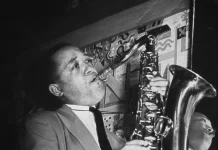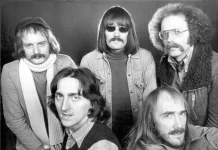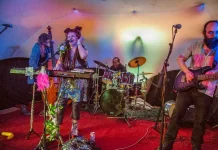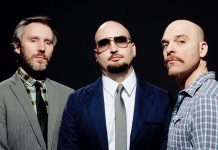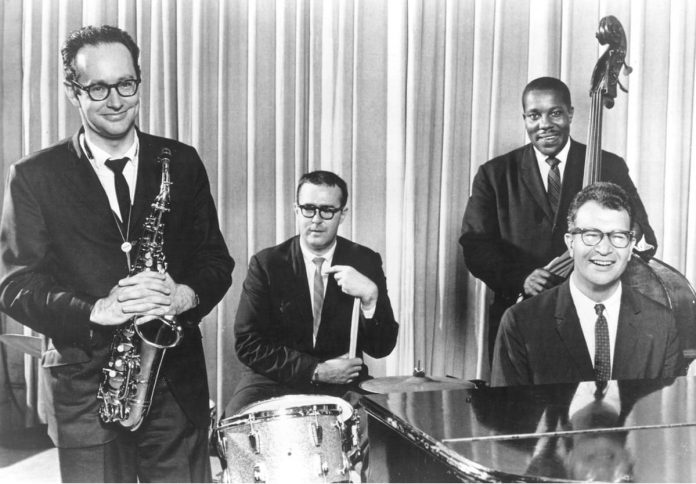
Transfer today’s appetite for cultural, but especially racial, inclusivity to the early days of jazz and one wonders if the all-white bands at that time were all-white because they wanted no truck with black (then coloured) musicians or felt there were enough all-black bands anyway.
In a society where cultural differences are mirrored in separate congregations and behaviour, each with its own undefined but understood parameters – don’t walk where you’re not wanted or you will be uncomfortable or will feel out of place – this arrangement probably worked well: white bands alongside black but never the twain meeting.
Problems shared by racial groups forced to live together in close proximity always exacerbate feelings of superiority. “White trash” communities who feel racially superior are ever conscious that in terms of economic deprivation they are no better off than their black neighbours and therefore have to assert any “natural” superiority by making it violent and aggressive. That there’s no more savage a racist than a poor white in a mixed neighbourhood is a sociologist’s given.
If the quality common to both black and white were musical rather than cultural, would one expect it to bind the two rather than divide them? History doesn’t furnish encouraging examples. It took a while for the term White Jazz to be anything more than a nominal label for a music in which blacks played no part or were concessional. But its power as a slur among suspicious blacks, or blacks who felt proprietorial towards a music their forebears invented and nurtured, was potent.
It’s amazing to think how much Dave Brubeck’s inclusion of the black bassist Eugene Wright in his quartet incensed white-run, southern American universities, who refused to let him play, while he refused to perform unless they accepted Wright as a member of the band. In January 1960 Brubeck had contracted to play 25 campuses. Eleven pulled out on learning of Wright’s inclusion and another 11 refused to let him play unless Wright were replaced by a white bassist. The remaining ones relented. Brubeck lost today’s equivalent of $400,000. The objecting college boards claimed their decisions were for contractual reasons – the musician had reneged on agreements – and not based on racial prejudice. It was scarcely a moot point: Brubeck held that contracts involving the segregation of performers based on their colour were by definition illegal and immoral. One wonders if the white alumni audiences denied the chance to listen to the Brubeck quartet would have thought differently from their principals, or indeed if they were composed of both black and white. They probably weren’t. It’s also reasonably well known that Brubeck’s stance against segregation and prejudice was a matter of personal attitude and demonstration. Where others went public, he opted for subversion. He was interested in bands, not bandwagons. But no doubt there were those who found fault with his approach.
This and similar examples proved that racial prejudice trumped music. It wasn’t that Wright was considered below par as a bass player but that he was black. A black virtuoso bassist wouldn’t have passed muster either. Few other instances of blind prejudice illustrate how barmy it was. In the case of jazz and the opportunity to listen to it live, it amounted to the supreme illustration of cretinous self-denial. It’s interesting to speculate on how many listeners were converted to jazz as a result of the image of respectability given to it by white musicians. Stan Getz, Gerry Mulligan, and a raft of West Coasters were other notable examples who might have been thought of as intermediaries between white, prejudiced audiences and the black exponents who were beyond the pale. The idiocy of that was exposed, if it needed revelation, by the all-black Modern Jazz Quartet and its pursuit of respectability’s epitome: jazz as chamber music; but it had already been confounded by Duke Ellington’s appearances before predominantly white audiences at the Cotton Club, where sophistication and the need to be seen to be sophisticated probably trumped both music and the skin colour of its practitioners. These are hoary examples from what a sixth-former might know about jazz history, and are almost certainly subject to more complex analysis: savage white racists in poverty-stricken mixed communities is not the only sociologist’s given. One also wonders how black musicians in white bands got on with their white colleagues. Pretty well, one hopes; but the recent exposure of racism in a bastion of English cricket does not guarantee equilibrium in what is ostensibly a harmonious multi-racial agglomeration. Benny Goodman, another white bandleader to do things differently by employing black musicians, also toured soft-shuffle swing to white college campuses which in the mid-1930s were ready to identify with the hotter “black” variety of his music exemplified by Fletcher Henderson arrangements, one in particular.
Jazz musicians over the decades may well have had no truck with the issues which divided wider society on racial lines. But such divisions have a habit of encroaching on the music. If you were a black musician just seven years after Brubeck made his personal protest you’d surely have been aware that segregation in southern schools was about preventing white students from being corrupted by proximity to black ones, maybe your own, rather than the other way about. Few white jazz musicians made music that was directly inflamed by what was happening to their black colleagues and were hardly likely to divorce themselves from a music business run by whites. It’s a commonplace to denigrate the all-white Original Dixieland Jazz Band for taking the credit – when making the first jazz recordings in 1917 – for a music that had been invented and forged largely among impoverished working-class blacks. But, again, it was more complicated than that; and the music of the black bourgeoisie further muddied the waters.
One aspect of all this is rarely investigated: the fact that not only, broadly speaking, do white musicians borrow from black ones at a basic level but that they have relatively few musical genres of their own with which jazz could be impregnated and enriched. Efforts by white bands to incorporate European classical or folk music into their form of imported American jazz, though entertaining, seem more worthy than iconoclastic. There was, of course, fusion, in which jazz attempted to weave (white) rock elements into its basic design, Jimi Hendrix being the exception among the influences. Today there’s a stronger link between young black jazz musicians and black (non-jazz) musical genres, such as hip-hop, rap, reggae and neo-soul, to the extent that a new black music is always on the verge of being created. Maybe it’s jazz by any other name.
Meshell Ndegeocello (aka the German-American bassist and rapper Michelle Lynn Johnson), although having performed as an instrumentalist with Jack DeJohnette and Kenny Garrett, told one interviewer: “I don’t really like the word ‘jazz’. I don’t know what it means any more, and I have all the historical information that I’ve been given . . . improvisational music isn’t entertainment for most people; it’s usually just trying to peer into what the instrumentalist can express.” Robert Glasper indulged his pop music/R&B proclivities on the Black Radio album. He told the same interviewer: “Basically, all the guys in my trio listen to hip-hop. We all check it out.” But he rejects the description of the resulting music as “hip-hop, jazz style”, preferring “hip-hop/jazz/soul fusion”. That Vijay Iyer, an American of Indian parentage, imbibes Asian sounds, is just a variation on the same theme. And so on.
It would be good to think that multiculturalism was the harmonious, non-exclusive conglomeration of racial groups. It’s more an eternally deferred ideal, at best reflecting a society in which, say, different musicians pursue their own separate cultural direction, often at a disadvantage. This manifests itself in jazz on racial lines; in contemporary Britain (well, the Britain of 30 years ago) and from the black point of view, as the 1980s Jazz Warriors. “Honouring the patriarchal homeland” is how David Burke headed the chapter on Dennis Rollins and recognised the Windrush generation in his book Giant Steps: Diverse Journeys in British Jazz (2021), which I reviewed in these pages. In Black British Jazz Routes, Ownership and Performance, co-editor Dr Mark Doffman noted: “When the Jazz Warriors started playing, young black musicians were struggling to get work on the white scene. They felt they were on the outside looking in, so they wanted to do something for themselves.” That he identified a “white scene” says it all.
One way of listening to jazz blind, and looking at its history and evolution without prejudice, is simply to choose what you think is the best and to take no notice of any other considerations. In 2002, the American critic Gary Giddins, in an article for Village Voice, posited an “arbitrary roadmap” of postwar jazz from 1945 to the time he was writing. In short, it amounted to choosing a series of tracks (not albums) by musicians who could appear in the list only once. In 1945 he chose Charlie Parker and Koko; in 1946 Woody Herman and Sidewalks Of Cuba. In 1999 his choice was Keith Jarrett and What Is This Thing Called Love?; in 2001 Jason Moran and The Sun At Midnight. One could tot up the number of black or otherwise non-white musicians listed in comparison with their white colleagues. But Giddins deals only with what he can hear on tracks he admitted were chosen for their consistent excellence, exuberance and diversity – and by diversity I think he was referring to musical qualities, not skin colour or racial background. His “map” was also restricted to American jazz.
Doffman’s observation of white and black British jazz running on separate rails might have applied to any social activity in which hopefully all would have equal rights and opportunities, but where the disparities are, for the present at least, fixed and seemingly immutable.


